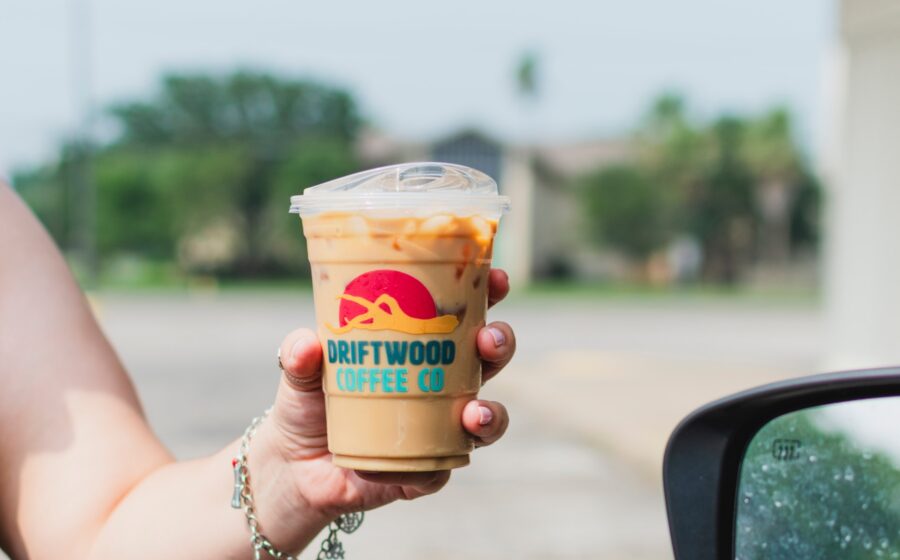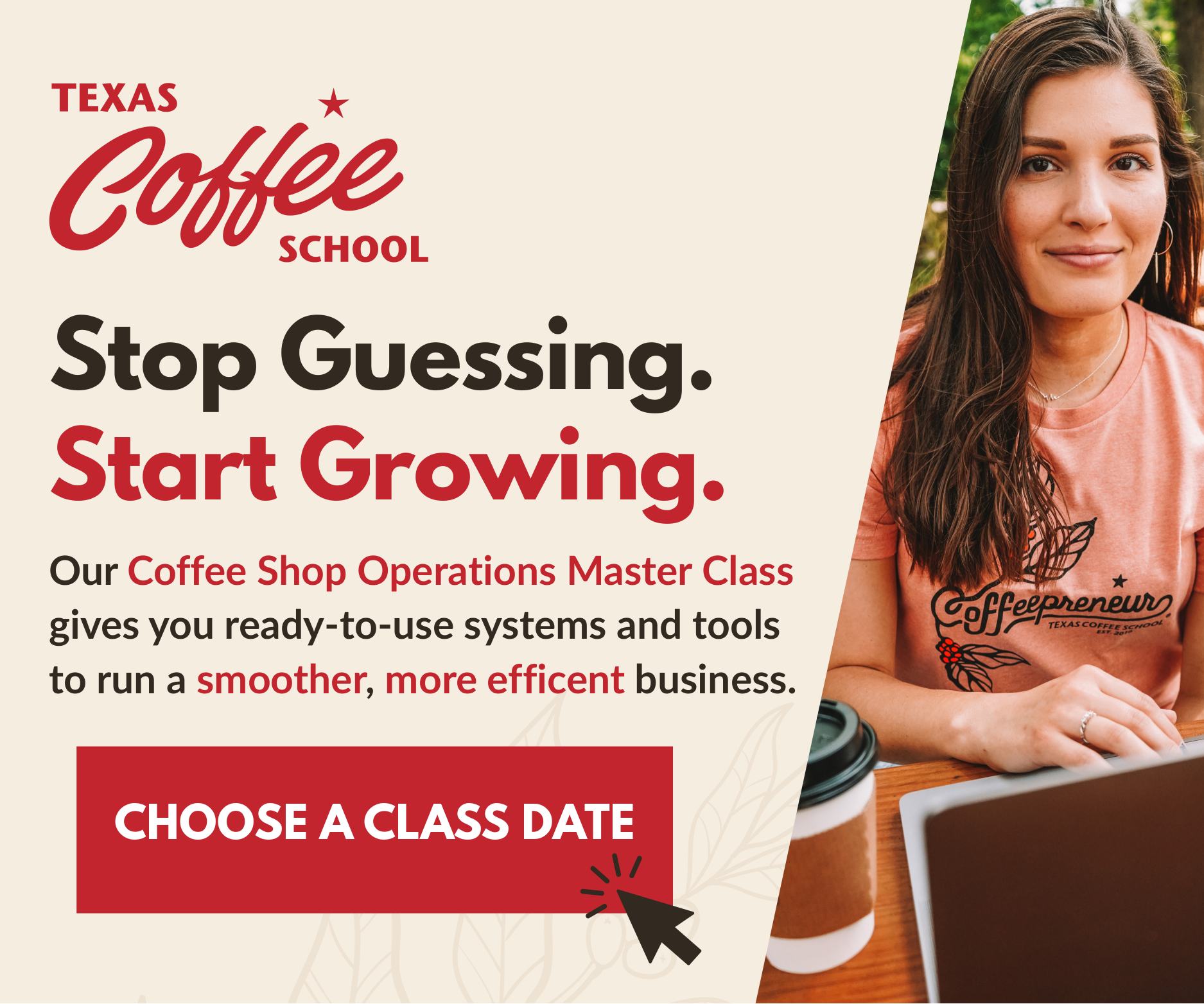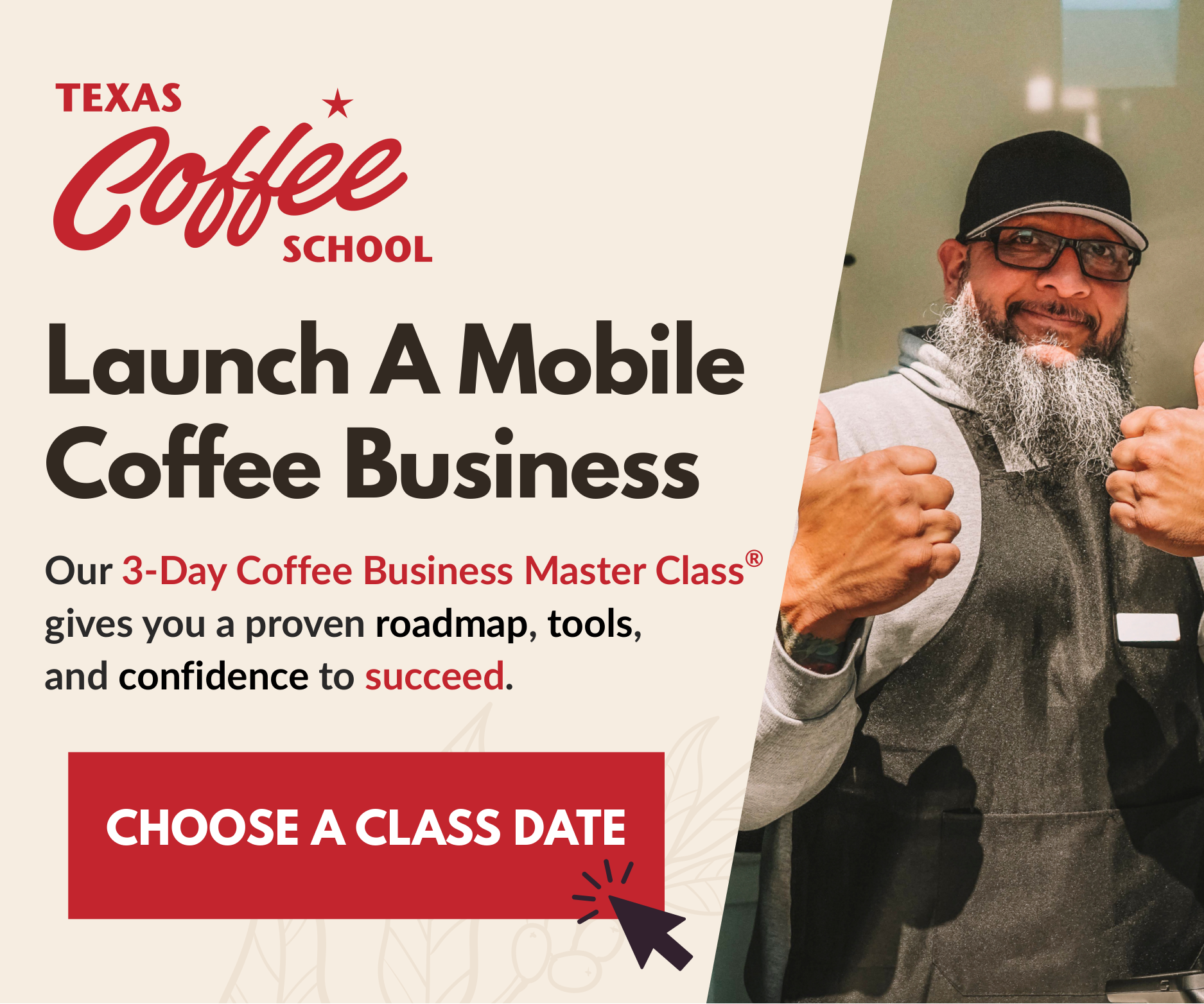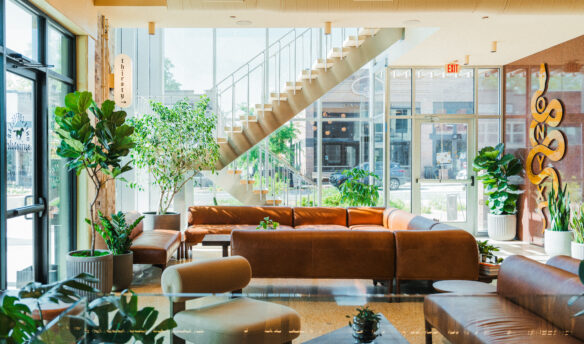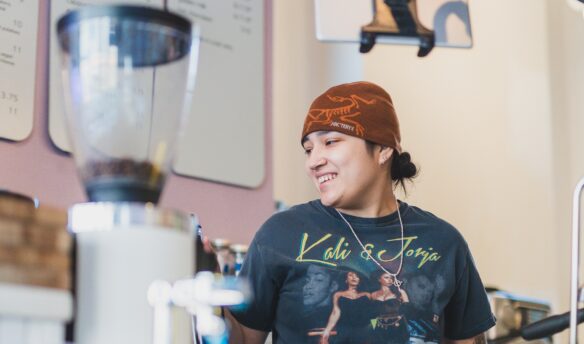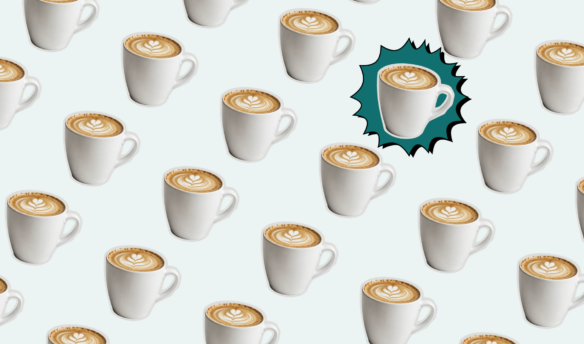This article is sponsored by our partner, Your Brand Cafe.
Fifteen years ago, coffee sleeves were one of the primary—and only—ways that coffee shops showcased their brands on the go. Made from basic corrugated paper, these cardboard sleeves often featured stamped logos or stickers. They provided a practical and cost-effective means for cafes to establish their brand identity, even if they offered an inherently limited canvas.
Fast forward to today, when customized coffee cup packaging has become far more accessible for independent shops. Many cafes are moving beyond simple, functional coffee sleeves to explore new printing techniques and a variety of cup materials. This evolution has led to bold and eye-catching designs that make a more memorable impression.
As customers carry their cups to work or snap photos to share online, they organically introduce the brand to new audiences. Now, coffee cups have become an essential tool for reinforcing brand messaging—one that can increase a coffee business’s visibility in places where traditional advertising often falls short.
We spoke with Lindsay Rutledge of Your Brand Cafe to discuss the evolution of coffee shop packaging over the last 15 years.
Bridging the Gap for Small Coffee Shops
Rutledge still remembers how popular branded sleeves were 15 years ago, when she started working at Your Brand Cafe. Many smaller shops thought custom branding—such as getting their logo printed on items like coffee sleeves, cups, and napkins—was only possible by working with large, overseas suppliers. “Coffee sleeves were cost-effective,” she says, “and they opened up a different marketing avenue that these coffee shops didn’t feel was accessible at that point.”
New coffee shops often lack the cash flow and storage space needed to stock large volumes of products, so it was tough for many to invest in custom branding or other supplies.
But a lot has changed in the branded packaging game over the last decade and a half, particularly when it comes to how much you need to order to meet printing minimums. Today, Your Brand Cafe allows coffee shops to make minimum orders of just one case of cups and supplies. This lets smaller shops access branded packaging without needing to store a lot of inventory or tie up significant capital upfront.
JoAnn Bertolino owns Pink Carrot, a mini-chain of juice bars and restaurants in Boston. Initially, she was concerned about the financial risk of investing in large quantities of packaging supplies before opening her restaurant, but she partnered with Your Brand Cafe for her branded coffee and drink packaging. “I started with them from day one,” she says. “I liked that I could get minimum quantities. I didn’t know what would happen with the business, so I needed a place where I didn’t have to order large amounts.”
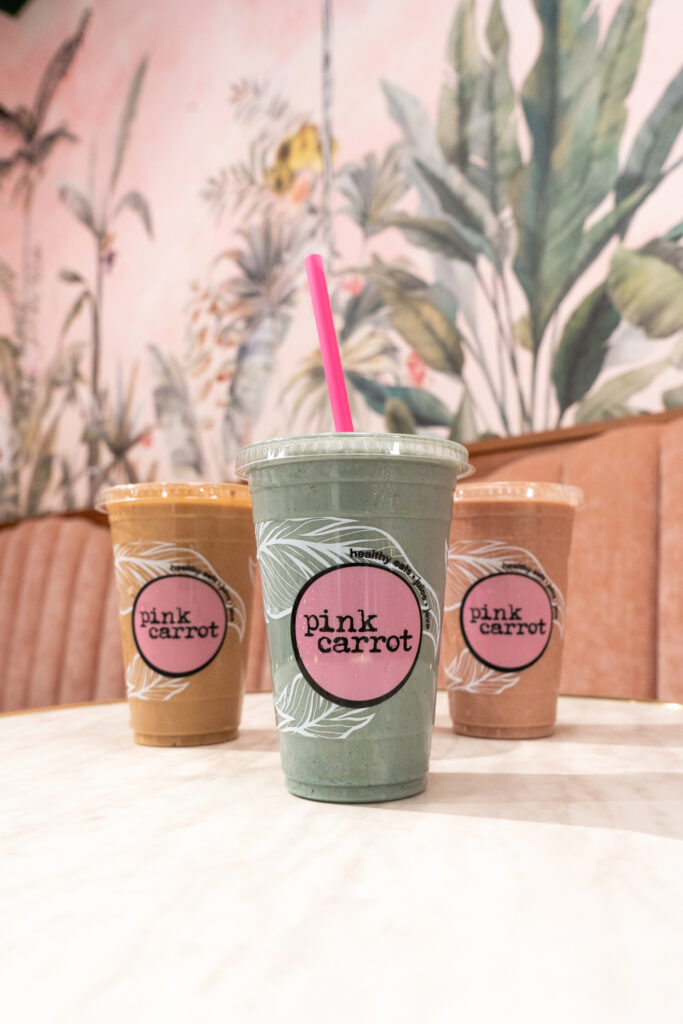
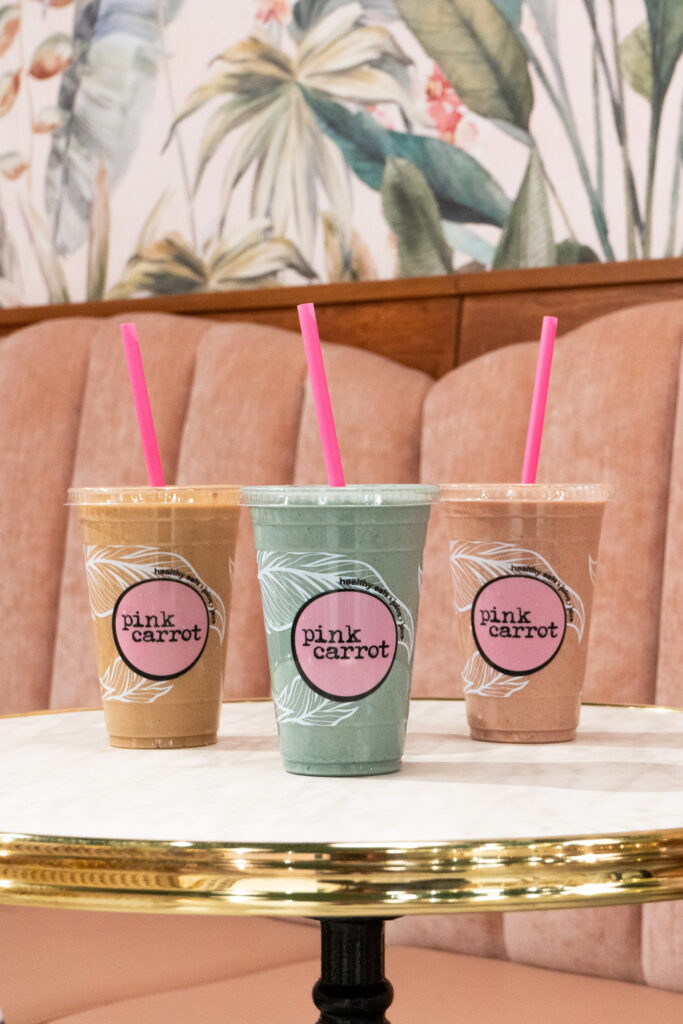
Branding has always been essential for Bertolino. She started with branded hot and cold cups, and now has the Pink Carrot logo on smaller items like sugar packets. “The cups reflect the inside [of the restaurant] when you bring it around in the city. You’re taking a piece of Pink Carrot with you,” she says.
Double-Walled Cups Change the Game
One of the biggest changes Rutledge, who is now the vice president of market development for Your Brand Cafe, has observed during her tenure is in the type of packaging materials businesses order. “We still see those staples of your white cup, printed sleeve, and lid, but we’re seeing significant trends toward things like double-wall cups,” she says.
In the 1990s, paper-cup manufacturers introduced double-walled cups to improve insulation for hot drinks. This innovation gained widespread attention after an infamous McDonald’s lawsuit in 1994, where a woman suffered third-degree burns after her styrofoam cup spilled hot coffee onto her lap.
Double-walled cups have two layers of material that create an insulating barrier between the hot drink and the outer layer of the cup. Today, they are standard in many coffee shops. These cups eliminate the need for a coffee sleeve, which reduces inventory costs. Without sleeves, some coffee shops double up on paper cups to prevent burns, leading to waste and higher inventory costs.
“For our hot cups, we use double-walled designs to avoid giving away two cups if it’s too hot or having to buy extra sleeves,” Bertolino says. “We’re trying to reduce the amount of packaging we use.”
In 2023, Driftwood Coffee Co in Corpus Christi, Texas, switched to double-walled cups for its hot coffee and tea drinks. Before this change, the coffee shop used single-walled paper cups with stamped sleeves. “It took a lot of time to manually stamp all those sleeves,” says Driftwood’s co-owner Ashley Medina.
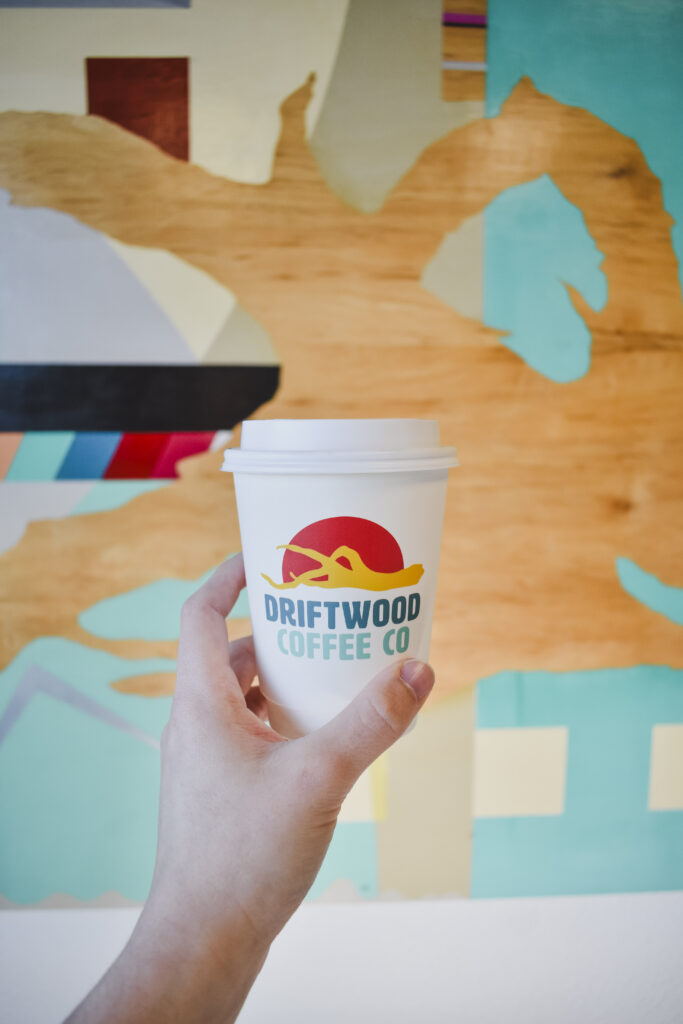
At the time, Medina was the shop manager at Driftwood. She got the idea for new cups after visiting another coffee shop, where she received her latte in a double-walled cup with custom artwork that caught her eye. Inspired by the design, she quickly took a photo to share on Instagram and thought, “We need our customers to love our cups this much.”
Branded double-walled cups can up the visual appeal because there’s no sleeve covering the cup. They’re also practical: Rutledge notes that while you need to set aside space for storage, it can take away from the work areas behind the counter and the space available for customers. “You want to limit that as much as possible,” she says.
Iced Coffee Cups and and Ice-Cold Style
Iced coffee has long been a cafe staple, but its popularity is only continuing to rise. Last year, nearly 24% of consumers reported drinking it daily—a 7% jump from the previous year. It’s clear that coffee culture is shifting, especially among younger drinkers, with 37% of those under 35 reporting that they drink cold coffee every day.
At Your Brand Cafe, Rutledge has noticed how regional preferences also play a big role in what customers want.
While many customers gravitate toward the classic 12oz hot cup and the popular 16oz clear cold cup, Rutledge says the style differs from coast to coast. “We do see differences in the styles of prints that come out of different regions,” she notes. Coastal areas often lean toward eco-friendly options and vibrant designs, while more traditional shops might stick to earthy tones. In bigger cities, Rutledge sees edgier designs leading the way. “Everybody gets to put their stamp on it,” she says.
At a coffee show not too long ago, Rutledge got requests from customers in the Pacific Northwest for larger cup sizes, like a “44oz cold cup.” In contrast, a 16oz cup tends to be the favorite in places like New York City, she says, where customers are more likely to enjoy their coffee on the move rather than drop it into their car’s cup holder.
Building a Brand Identity
As coffee packaging continues to evolve, it’s clear that consumers are leading the way, thanks in part to the influence of social media. Platforms like Instagram have become the go-to place where many customers share their coffee and food experiences online. In fact, 42% of customers now prefer using social media to discover new restaurants instead of search engines like Google or Yelp. This shift turns every cup into a chance for coffee shops to reach new audiences.
When consumers enjoy their drinks or appreciate the presentation, they share it. This is where branding plays a crucial role. “They’re not just showcasing how great your product is, but your brand name is right there—nobody’s going to miss it,” says Rutledge.
Rutledge points out that branded cups can communicate quality and care for your product, something customers pick up on. “Having your name on the cup is your stamp on your product,” she explains. “You’re saying, ‘I’m proud of this product, and I want everyone to know it.’”
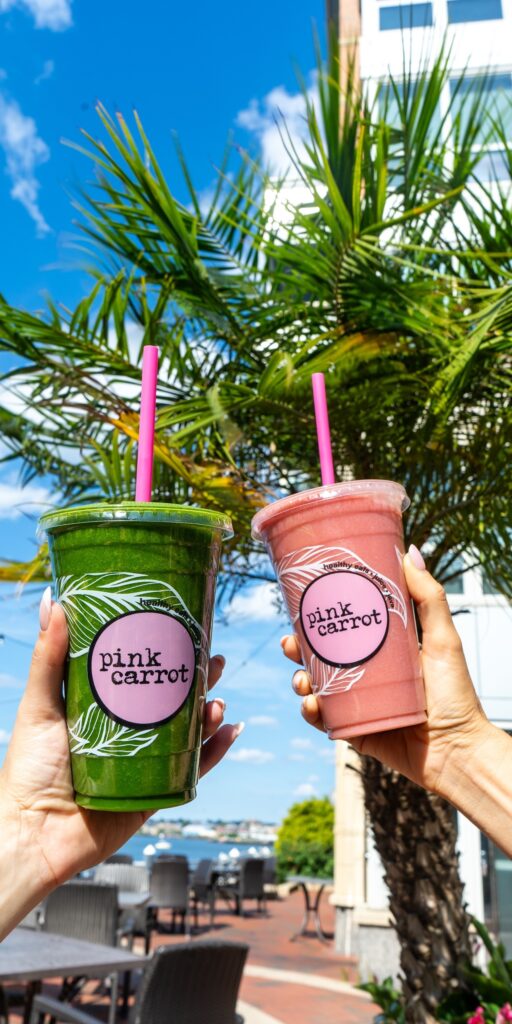
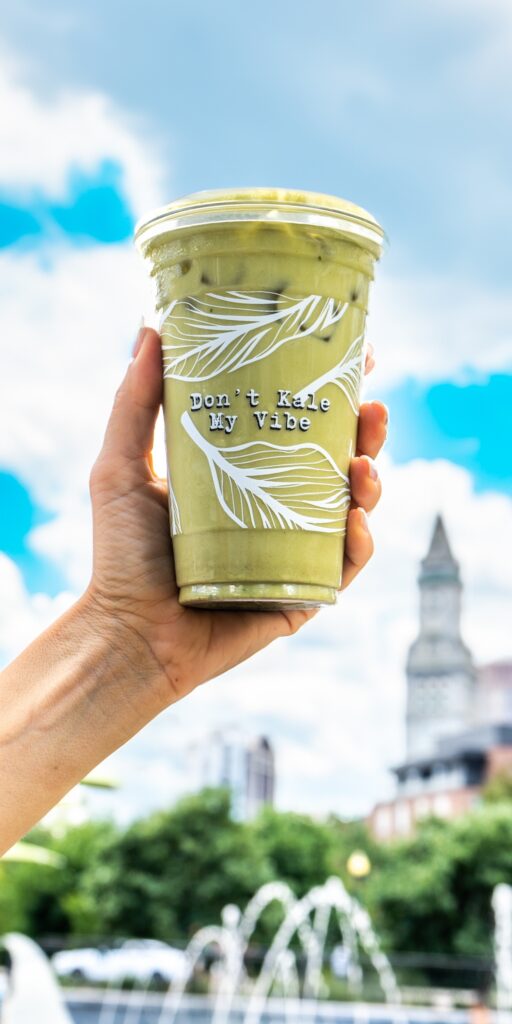
Pink Carrot’s Bertolino echoes this idea. “It’s crazy, people take more pictures of our cups than they do of our food sometimes,” she says. The mini-chain’s brightly colored coffee packaging is hard to miss: think pink latte cups with a cartoon drawing of a girl wearing bunny ears and sunglasses across one side.
Recently, Pink Carrot redesigned the cold cups it uses for iced lattes, juices, and smoothies. The new wraparound design features a pink logo with white leaves on one side and the phrase, “Don’t kale my vibe,” on the other. No matter how the cup is positioned, there’s always a visual to catch a customer’s attention. “People notice our cups,” says Bertolino. “Even when I’m walking down the street with my smoothie, people stop me and say, ‘That’s so cute! Where’d you get that smoothie?’”
Medina agrees that small touches, like custom-printed double-walled cups, elevate the overall customer experience. “We pay attention to the little things, and our customers notice,” she says. “We go the extra mile and pay a bit more to have our cups custom-printed—just to elevate that experience.”
What’s Next for Coffee Packaging
Consumers and coffee shop owners are becoming more aware of the environmental impact of their products.
Rutledge remembers that 15 years ago, many Your Brand Cafe customers didn’t recognize terms like polylactic acid (PLA), an eco-friendly plastic alternative, or PET (polyethylene terephthalate), which is often used for carryout containers and is recyclable. “Now, they know what PET and PLA plastics are and what they want,” she says. “If our customers know and understand that, then their customers do too.”
At Your Brand Cafe, the future of coffee packaging looks promising, as the industry shifts toward eco-friendly options. Rutledge expects biodegradable and compostable materials to become increasingly popular among consumers. “We’re really starting to gain that knowledge,” she adds, “along with research to make sure there are facilities nearby that can handle these materials properly.”
There are also new regulations to consider. Cities like San Francisco are banning single-use plastics and promoting compostable or recyclable alternatives, putting pressure on cafes to adapt. At Pink Carrot’s second location in the Chestnut Hill neighborhood of Newton, Massachusetts, all takeout containers—including cups and silverware—must be compostable. This new law, which went into effect in March 2024, shows a broader trend toward sustainability, and, for coffee businesses, emphasizes the importance of staying compliant with changing regulations.
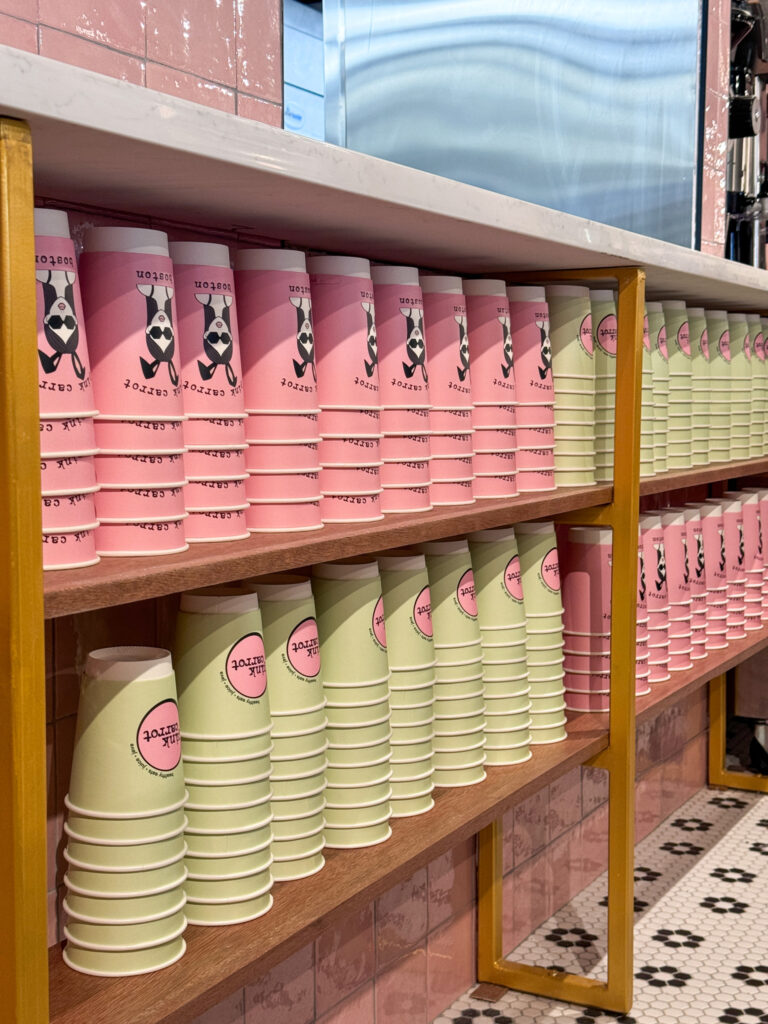
Looking beyond sustainability, Your Brand Cafe anticipates exciting changes in the design of plastic cold cups. After years of using the same shapes, Rutledge believes we’ll start to see a variety of unique styles. “We’re going to see trends moving toward more rounded-bottom cups or something different that really catches the eye,” she says.
As customer tastes evolve, innovative packaging designs will not only help meet new regulations but can also appeal to the preferences of new generations of coffee drinkers. The evolution from basic cardboard sleeves to creative and eye-catching packaging reflects how coffee shops are discovering new ways to amplify their visibility and attract customers.

Sponsored by Your Brand Cafe
Your Brand Cafe provides high-quality disposable cups, sleeves, takeout containers, and more to coffee shops and restaurants. Stock up on basics or get custom branded supplies.



